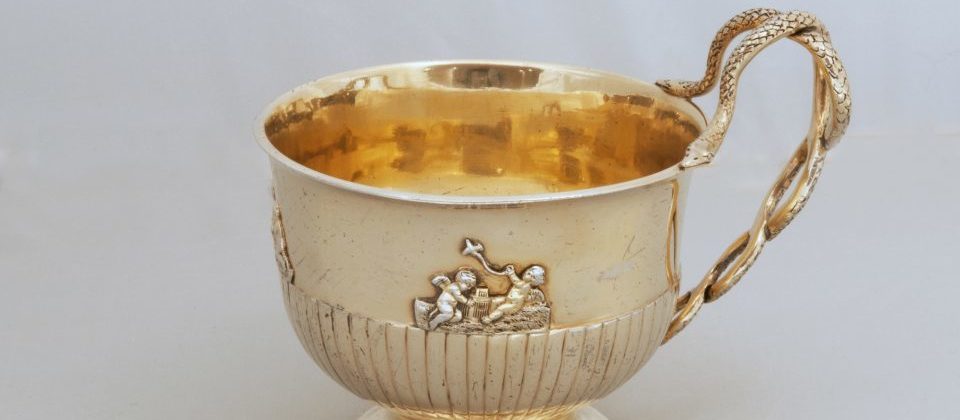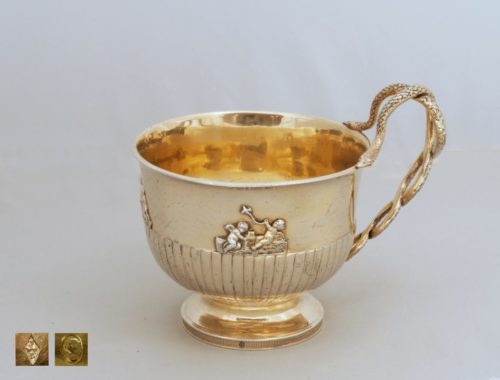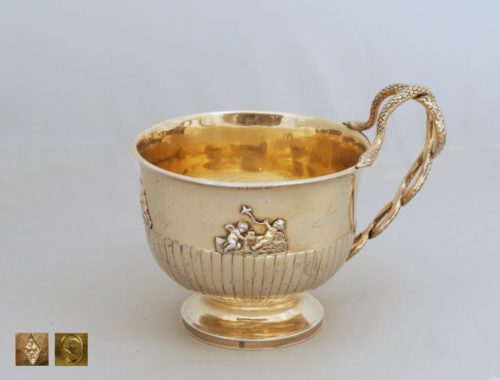Object Number: #366
Paris, c. 1793
Joseph Deviegos
City’s hallmark: interim guarantee mark for silver of every fineness, Paris (actually used only between 1793 and 1794, but later still in use) (Rosenberg 1928 (4), p. 262, No. 6558)
Maker’s mark: ,,JD” for Joseph Deviegos (Arminjon u.a. 1991[1], p.188, No. 01712)
Tax mark for Vienna 1810-1824, (Rosenberg 1928 (4), p.435, No. 7887)
Height: 11 cm (4,33 in.); Dia.: 10,5 cm (4,13 in.); Weight: ca. 286 gr.
Detailed Information
The present cup, designed according to antique models, is a nice example of the French Empire. The cuppa is raised on a round foot decorated with vertical grooves. Half of the outside of the cup is garnished with vertical gadroons, directly above, there are three scenes with putti applied as a relief. The handle is shaped in the form of two entangled snakes. The cup is inside and outside gilt.
French Empire
Empire is the French style of classicism, during the First French Empire [Napoleonic era] (1804-1815). The art form originated at the beginning of the nineteenth century and spread throughout Europe. Greek-Roman as well as Egyptian motifs were very popular under this style. Symmetrical forms were a main decorative choice. The ornaments were usually applied on the objects and not embossed or engraved.
Maker: Joseph Deviegos became master around 1783 in Paris. One still finds from time to time objects made by Deviegos in the art market. See for instance a pair of ecuelles, Christie’s auction Interiors, Paris (April 28th 2016), Lot 604.
Literature:
Marc Rosenberg: Der Goldschmiede Merkzeichen (Band 4): Ausland und Byzanz, Frankfurt am Main 1928 (http://digi.ub.uni-heidelberg.de/diglit/rosenberg1928bd4, last call on 05/03/2017).
Catherine Arminjon u.a.: Inventaire Général des Monuments et des Richesses Artistiques de la France [1]. 1798-1838. 2. Bde (= Cahiers de l’Inventaire, 25), Paris 1991.




